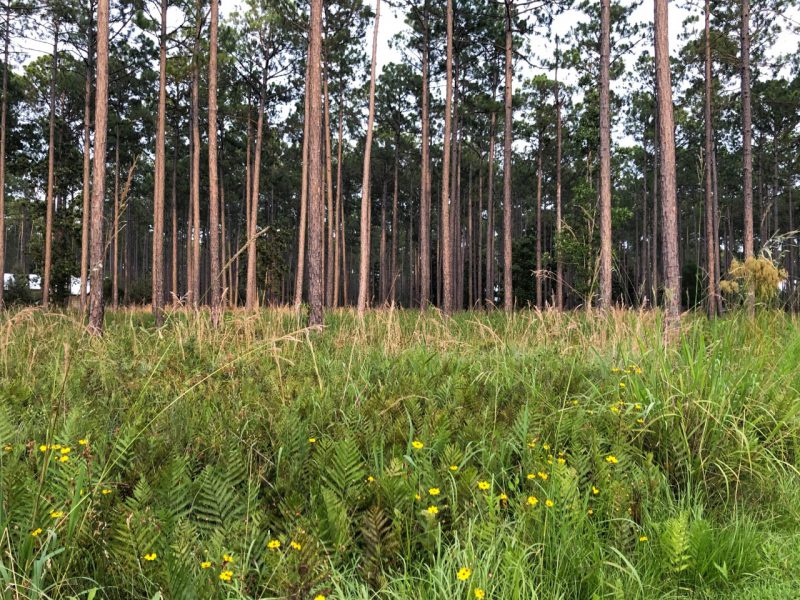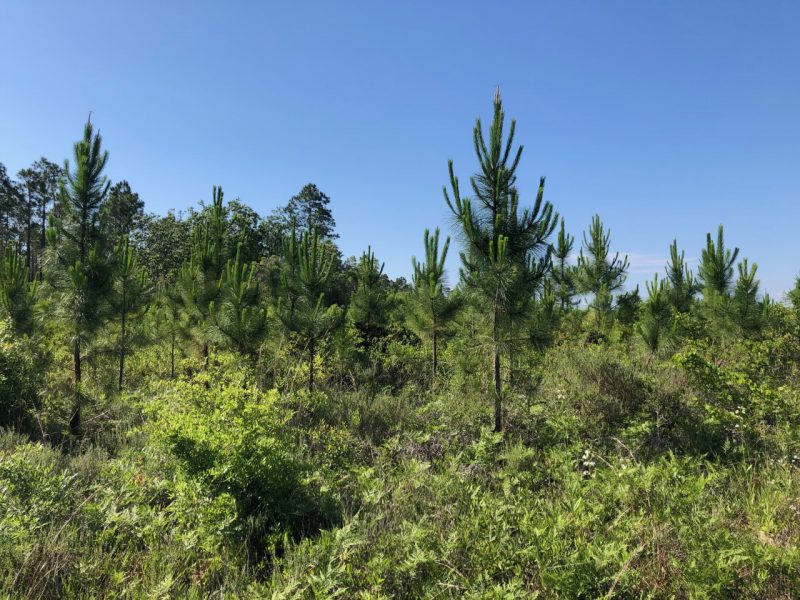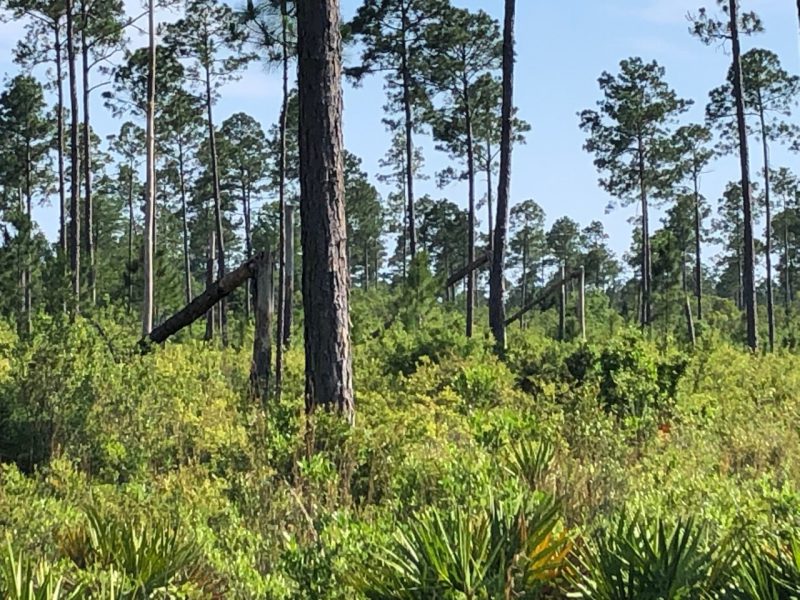Stephen Greer, County Extension Director, UF/IFAS Extension Santa Rosa County
Managing a healthy forest involves many landowner decisions, all of which need to be made based on the owner’s long-term goals and desired benefits. These decisions not only impact the landowner, they have the potential to impact the community and region. There are public benefits associated with clean air, improved water quality, and more diverse ecosystems, associated with healthy forests. To guide the specific decisions landowners must make to manage a healthy forest goals and objectives must be determined beginning of the endeavor. The objectives may include lumber production, recreational use, hunting, aesthetics and more.

Well managed, healthy forests benefit all of society, not just the forest owner. Photo courtesy: Stephen Greer, UF/IFAS
–
A healthy forest begins with the soil. Soil characteristics greatly effect what species of trees will perform the best on the site. Select quality trees that are well suited to your site. Soil testing and making any necessary amendments before planting is an additional step that can be taken to ensure a newly planted forest gets off to a strong start. Go by your local Extension Office to obtain the soil forms and instruction on the sampling process.
–

Managing undergrowth with prescribed fire is an important step to mitigate wildfire risk. Photo courtesy: Stephen Greer, UF/IFAS
–
Along the way to a healthy forest, the decision to plant seedlings or rely on natural regeneration is one of the first decisions that must be made. Historically, 4 – 6 trees per acre were left to reseed the area. This practice is refereed to as natural regeneration. Today most pine forests are planted in rows using seedlings that have been bred for certain performance qualities. Planting improved seedlings is the way to go if the goal is to efficiently harvest timber and consistently generate a higher return per acre.
Planting with a plan does not always guarantee a high return on investment. Neglect, weather events, insects, or disease can all negatively impact the performance of the stand or individual trees, ultimately impacting the landowner’s return on investment. Wildfires in poorly managed pine plantations (or natural sites) can stress or even kill healthy pine trees. The stressed or damaged trees left after this type of event are more susceptible to invading insects and diseases. Managing undergrowth with prescribed fire is an important step to mitigate wildfire risk. It also opens the forest floor, improving wildlife habitat and creating a more diverse ecosystem.
–
Thinning pine stands will need to be a part of building a healthy forest. Thinning a stand also helps generate return on the planting investment. Thinning the pine stand 10-16 years after planting, depending on the pulpwood market and proximity to the mill can offer an acceptable level of return. Thinning can also open the forest for easier access by wildlife, hikers, landowners, and equipment. Reducing the tree population through this type of harvest allows the remaining trees to continue growing at an accelerated rate, ultimately becoming higher value forest products like sawtimber, plylogs, or poles. Be sure the to retain the straightest, healthiest, larger trees when thinning.
It is highly recommended to begin your forest with a forestry management plan to help guide decisions throughout the life of the forest. Having a plan in place reduces potential risk associated with hasty decisions and poor follow through. Consider contacting you County Forester or a certified consulting forester for help developing the plan. This type of plan will most often include details about the decisions previously discussed and much more.
–
For more information, look through all of the UF/IFAS publications listed under the topic: Forest Management and Stewardship
- Land Management to Enhance Wild Turkey in the Panhandle - September 29, 2023
- Healthy Forest Management - April 14, 2023
- Benefits of a Forestry Consultant - October 7, 2022

